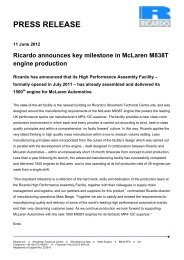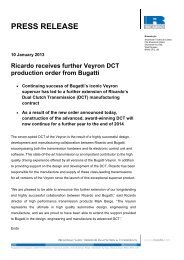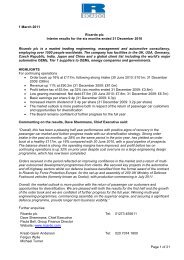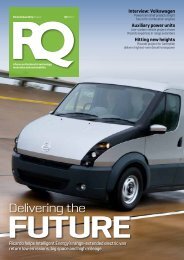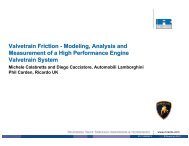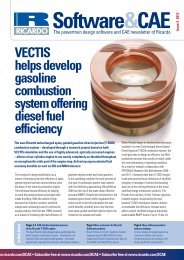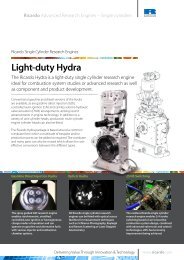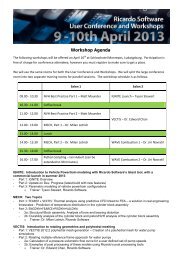CASE STUDY USING PISDYN OF THE EFFECT ON ... - Ricardo
CASE STUDY USING PISDYN OF THE EFFECT ON ... - Ricardo
CASE STUDY USING PISDYN OF THE EFFECT ON ... - Ricardo
You also want an ePaper? Increase the reach of your titles
YUMPU automatically turns print PDFs into web optimized ePapers that Google loves.
the <strong>PISDYN</strong> model would be able to satisfactorily predict the wear patterns on subsequent<br />
design iterations of the piston. Consequently, only two prototype versions of the piston needed to<br />
be actually produced and tested - an initial design and the final design.<br />
Two separate simulations of each design were performed at maximum power operating<br />
conditions. In simulation A, where roughness parameters of the skirt and liner were set in<br />
<strong>PISDYN</strong> to replicate actual values, the purpose was to determine the skirt-liner friction and to<br />
determine the maximum wear loads in order to ascertain whether scuffing could occur. In<br />
simulation B, the roughness parameters were altered such that the simulation would better<br />
predict the wear pattern on the piston. It was necessary to make special adjustments to predict the<br />
wear pattern in order to account for the fact that during actual use the wear pattern will be wider<br />
than predicted. This is because in actual use, the region of the skirt most prone to wear will be<br />
first to experience a reduction in thickness (and therefore an increase in clearance with the liner),<br />
leading to surrounding regions of the skirt beginning to wear against the bore. In both<br />
simulations, worst case conditions were assumed by setting skirt-bore clearance to the minimum<br />
of the tolerance range.<br />
Simulation A of the final design predicted that scuffing would not be a problem. This was<br />
confirmed by a hot scuff engine test at maximum power output conditions. Simulation B of the<br />
final design predicted that the wear pattern on the skirt was suitable. This was again confirmed<br />
by the engine test. Figures 1 and 2 compare the wear patterns from the <strong>PISDYN</strong> simulation and<br />
from the hot scuff engine test respectively. The two patterns are quite similar apart from a wear<br />
region in the lower part of the skirt around the thrust plane, which was not predicted by the<br />
simulation.<br />
6 of 13





